Micro-XRF
Micro-XRF is a non-destructive, versatile analytical technique which can be used in a wide variety of applications.
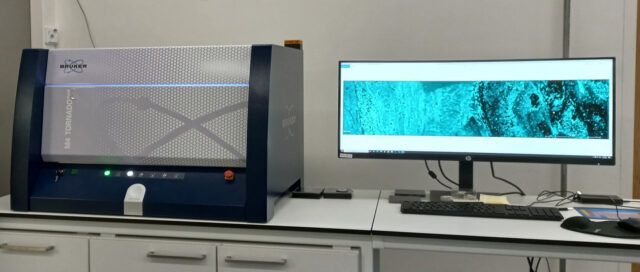
Our M4 Tornado PlusAMICS from Bruker is an advanced micro-XRF instrument. It provides detailed information about composition and element distribution, even below the sample surface, without damaging the sample. This technique requires minimal preparation and is optimised for high-speed analysis of points, lines, and 2D areas.
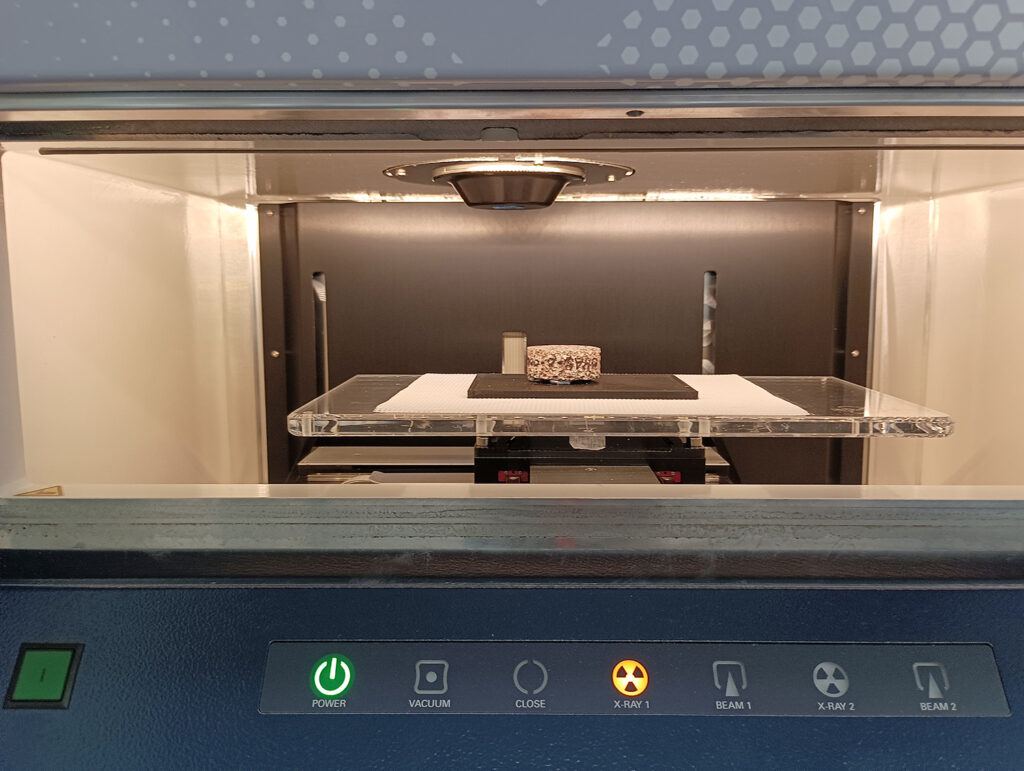
Key features include:
- Primary X-ray Tube (Rh source): Excites spot sizes < 20 µm (for Mo-Kα).
- Secondary X-ray Tube (W source) with collimator: Excites heavy elements in lighter matrices.
- Dual Silicon Drift Detectors (SDDs): Enhance acquisition speed and minimise shadowing effects on non-planar samples.
- Sealed Sample Chamber: Adjustable pressure between 1 mbar and atmospheric pressure.
- Large Sample Stage: Accommodates samples up to 200 x 160 mm in area, 120 mm in height, and 7 kg in weight.
- Helium Flush: Improves light element detection in biological or wet specimens.
- AMICS Software: Automates mineral analysis.
Micro-XRF is ideal for rapid, detailed elemental mapping and analysis across a diverse range of materials .
Portfolio
Explore our research initiatives across diverse disciplines, including geoscience, mining, conservation, and art, building materials, semiconductors, and biology, through visually compelling examples.
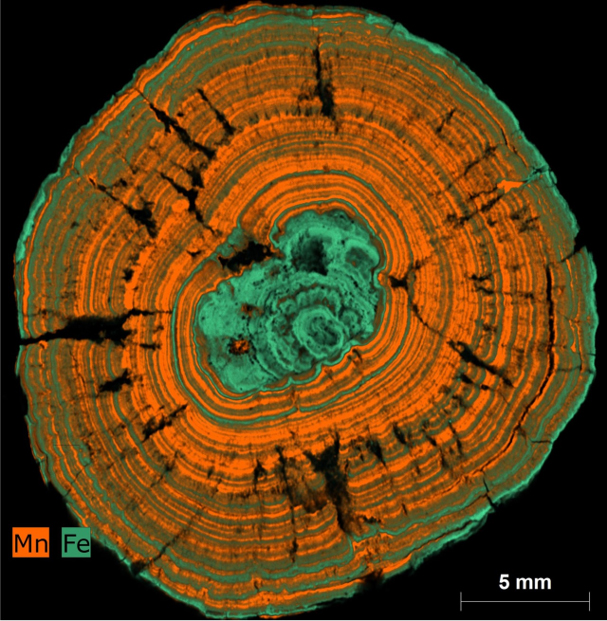
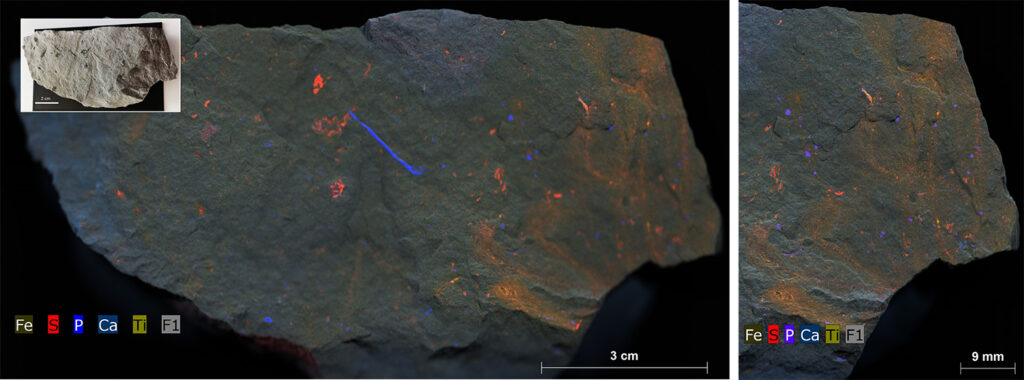
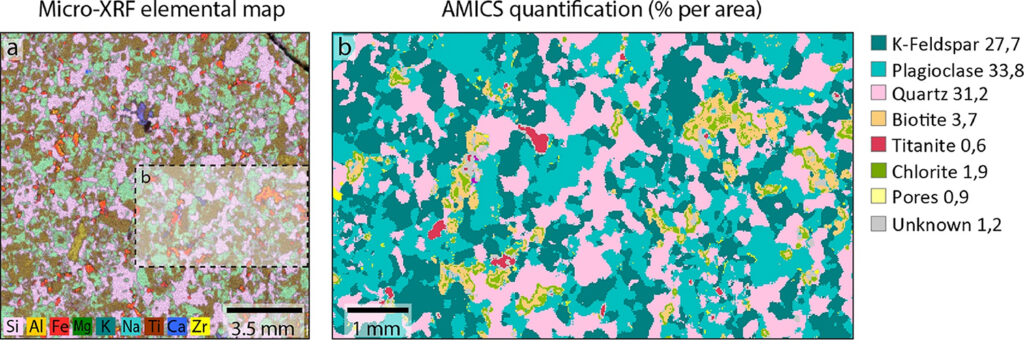
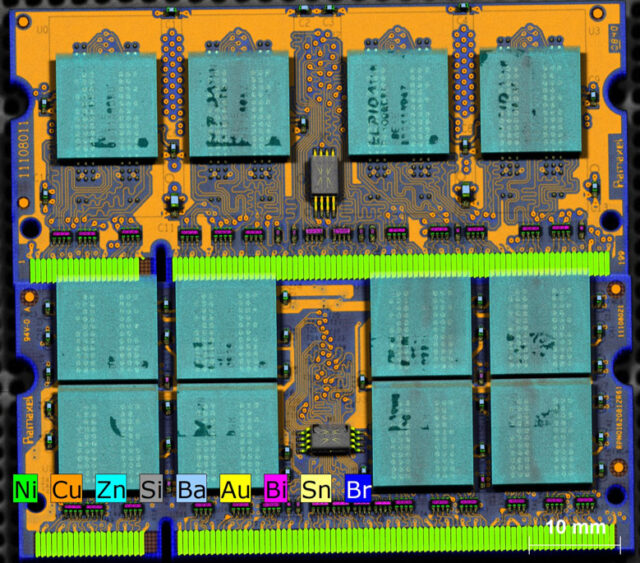
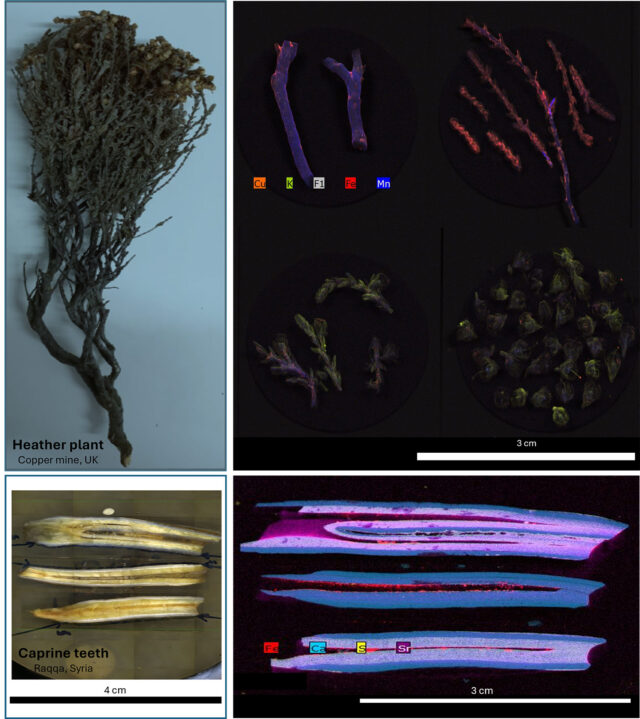
Publications
2024
Ang, JWL, Bongrand, A, Duval, S, Donnard, J, Jolis EM, Utsunomiya S, Minomo, K, Koivula, R, Siitari-Kauppi, M, Law GTW. Detecting radioactive particles in complex environmental samples using real-time autoradiography. Sci Rep 14, 5413, 2024. https://doi.org/10.1038/s41598-024-52876-w
Bischoff, A., Heap, M. J., Mikkola, P., Kuva, J., Reuschlé, T., Jolis, E. M., Engström J, Reijonen H, Leskelä T. Hydrothermally altered shear zones: A new reservoir playfor the expansion of deep geothermal exploration in crystalline settings. Geothermics, 118, 102895, 2024. https://doi.org/10.1016/j.geothermics.2023.102895
Reijonen, HM., Elminen, T, Heikkilä, P, Kuva J, Jolis EM. Enhanced Identification of Fracture Smectites and Other Alteration Minerals Via Short-Wave Infrared Reflectance at Two Finnish Crystalline Sites, Olkiluoto and Hyrkkölä. Rock Mech Rock Eng, 2024. https://doi.org/10.1007/s00603-024-03764-2
Wasiljeff, J, Salminen, JM, Roberts, AP, Hu, P., Brown, M, Kuva, J, Lukkari, S, Jolis, EM, Heinsalu, A, Hong, W.-L, Lepland, A, Suuroja, S, Parkkonen, J, Virtasalo, J. Morphology-Driven Magnetic Characteristics of Shallow-Water Ferromanganese Concretions. Geochemistry, Geophysics, Geosystems, 25, e2023GC011366. https://doi.org/10.1029/2023GC011366
2023
Donnelly L, Pirrie D, Power M, Corfe I, Kuva J, Lukkari S, Lahaye Y, Liu X, Dehaine Q, Jolis EM, Butcher A. The recycling of end-of-life Lithium-ion batteries and the phase characterisation of black mass. Recycling, 8(4), 59, 2023, https://doi.org/10.3390/recycling8040059
Kröger B, Tinn O, Rikkinen J, Jolis EM, Butcher AR, Toom U, Hints O. Noncalcified dasyclad algae from the Vasalemma Formation, late Sandbian (Late Ordovician) of Estonia. Review of Palaeobotany and Palynology, 318, 104970, 2023, https://doi.org/10.1016/j.revpalbo.2023.104970
Sardisco L, Apeiranthitis N, Hirani J, Franzel M, Jolis EM, Lukkari S, Michallik RM, Tepsell J, Pearce TJ, Butcher AR. Battery Mineral Characterization—A Case Study of a Nickel Reference Material. Materials Proceedings, 15(1):83, 2023, https://doi.org/10.3390/materproc2023015083
2022
Mahesh A, Windmill R, Corfe IJ, Sungwoo L, Jolis EM, Lukkari S, Pankhurst MJ, Barbee OA, Coldwell BC, Rodriguez NP, Butcher AR. Volcanic ash as resource for furure research on the Earth and the Moon. Geology Today, 4, 144-148, 2023.
Nikkola P & Jolis EM. (2022) Mikro-XRF: alkuainekarttoja ja tehokkuutta raskasmineraalien tunnistamiseen. Geologi 74, Nro 2, p. 120-123, 2022.
